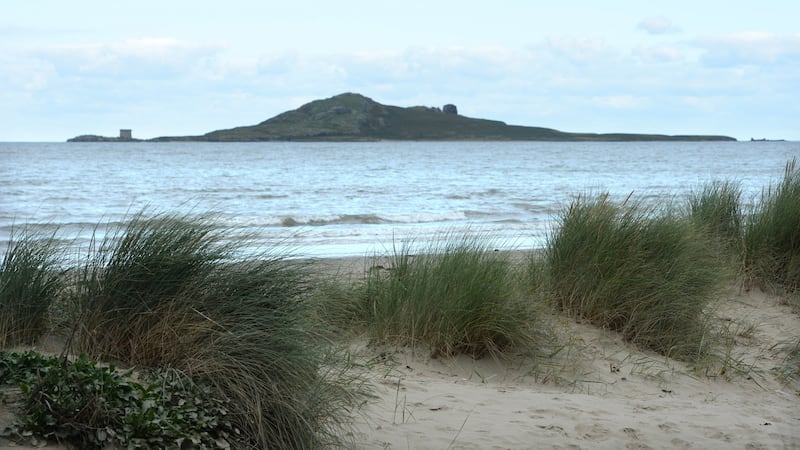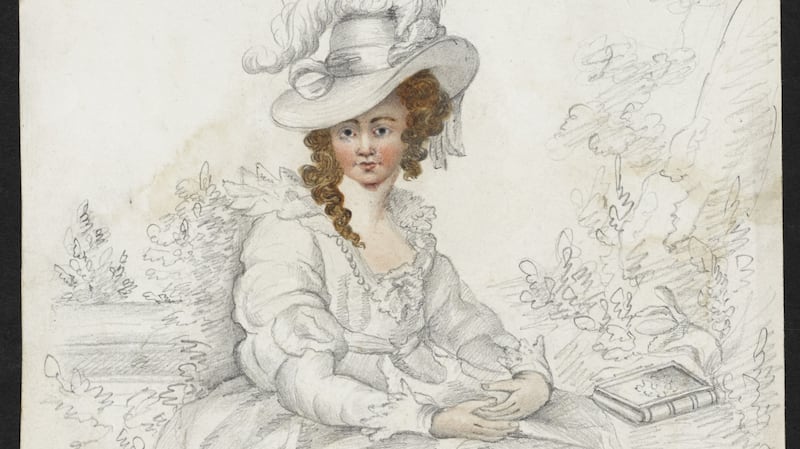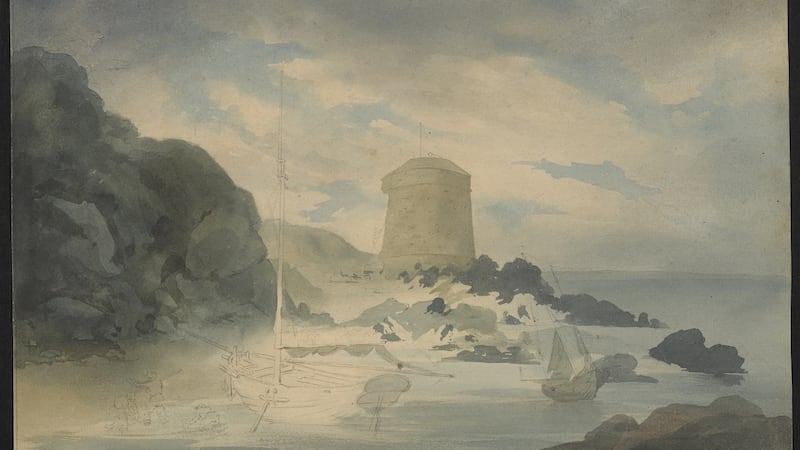The couple boarded the little boat in the harbour, not for the first time. Ireland's Eye, a small island overlooking the fishing village of Howth, Co Dublin, was their destination. Maria Kirwan and her husband, William Burke Kirwan, were ferried over by a small crew of fishermen operating the short route at about 10am. It was September 6th, 1852.
The pair weren’t locals. They were tourists, really. They had decamped from their lavish Upper Merrion Street home, taking lodgings in Howth for the summer months. William was an artist and anatomical draughtsman – one of “considerable” means – who was often absent from the house the couple rented from Margaret Campbell in Howth, apparently in the city on business.
Maria, on the other hand, seemed to make easy work of endearing herself to the locals – particularly the women at the lady’s bathing place, where her impressive abilities in the water were well noted in the close-knit village.

When the boat returned to Ireland’s Eye at about the appointed time of 8pm, the crew found William alone on the rocks. A search followed, prompted by one of the boatmen. Sometime later Maria’s body was discovered in the Long Hole, a lonely patch of rocky shore, not often then attended by women for swimming.

Maria’s remains were wrapped in a sail and returned to Mrs Campbell’s, where three local women washed the body. They couldn’t have known it, but the smaller details observed – scratches, bleeding, some froth at Maria’s mouth – would become invaluable. All three would notice William’s wet trousers; as his wife lay dead in the room he’d rented, he sat by the fire in a different room, changing his stockings and dripping water on to the hearthstone under the watchful eye of a local police sergeant.
The following day, an inquest – the soundness of which would be much debated – concluded with the verdict that Maria had drowned accidentally. A few days later she was buried in Glasnevin. The “melancholy” accident, as it was billed in some newspapers, apparently concluded. For a short time.
New details emerged soon after the inquest, fuelling suspicion around William Burke Kirwan. Stories would circulate about unspeakable cruelty on William’s part, replete with neglect, dishonesty and an entire secret life. Witness statements were gathered over several dates, the deceased woman’s body was exhumed for postmortem, and William was arrested, tried and convicted of his wife’s murder.
The story of Maria Kirwan’s death is a bitterly sad one. Despite the media sensation at the time, I found when setting out to write a book about the case that it was a story surprisingly little known in the locality, bar perhaps among Howth’s many knowledgeable local historians.
From the outset of the project, hard facts seemed awkward and difficult to grasp. The very first task was unusually elusive: gathering the agreed-upon version of events that renders something approaching “the story” in clarity. That cohesive chain was missing. In its place were sometimes yawning, unignorable holes.
Some inconsistencies within the prosecution's story were displayed to the jury at Kirwan's packed-out trial at Dublin's Green Street Courthouse in December 1852. Isaac Butt had a fierce reputation as a barrister, and this was underlined during his defence of Kirwan.
The accused man's supporters were legion; well-organised and well-heeled. Following the verdict, pamphlets were produced and widely circulated to save Kirwan's life and secure his liberty. Declarations from key players in the Kirwans' lives, promoted heavily by solicitor John Knight Boswell after the trial, would become points of contention. The discussion became noisy. Battle lines were drawn in the press.
One catalyst for the press war appeared in The Times (London) in December, when the paper mournfully declared that the episode had a painful notoriety, “even in the dismal annals of Irish crime”. Unsurprisingly, that was enough to prompt others to wonder what it was about the crime that made it uniquely Irish. And on it went. Heels were dug in as half-informed arguments in the press became of poorer and poorer value in the pursuit of truth.
And so, with confusion abounding and unambiguous facts thin on the ground, this book project changed course somewhat. Pulling at the strands of circumstantial evidence revealed that the infamous Ireland’s Eye case was perhaps not so much about a murder and the mystery of who committed it; it was more about the bleak ending of a life, a media circus, and the question of whether a murder took place at all.
Of course, the revelation of a secret life – an “unfortunate connexion” that apparently spanned more than a decade and left one other woman on the door of destitution – provided motive for the Crown, if read a certain way.
The notorious particulars of Kirwan’s personal life were referred to repeatedly, labelled here and there as the “moral” facts of the case. There were other strands of evidence, found largely within an extensive brief created for the prosecution: they include screams heard from the island around the time Maria was supposed to have died (even a light reading of the earwitness accounts reveals disparities and incredible acoustic claims). Also present are detailed allegations indicating serious physical abuse suffered by Maria at the hands of her husband.
Any evidence is difficult, now, to test in any meaningful way. Much relies on who the reader chooses to believe. The medical arguments are a little different – experts know more now than they did then, and much of the original evidence, including postmortem findings and multiple witness accounts, still exists.
Dr George Hatchell, performed the postmortem exam a month after Maria’s death and weeks after her burial at Glasnevin, where water poured from the coffin as it was raised. They were not ideal conditions for reaching solid conclusions, but somewhere between his earliest statements and the day he stood in the witness box, it’s fair to say Hatchell’s opinion about what happened to Maria hardened – and not in favour of the prisoner.

Asphyxia, he told the jury, was the cause of Maria’s death. At one time Hatchell had said either drowning or strangulation was possible, but that forming an opinion would be “hazardous” due to the elapsed time between Maria’s death and the examination. However, at trial he said the level of congestion he discovered, along with other appearances, were to a further extent than he would expect to see in “simple drowning”. The doctor said “constriction”, or “pressure of some kind” must have been a factor.
Following harsh cross-examination from Isaac Butt, the doctor conceded that perhaps Maria struggled with herself but by then he had apparently made his mark on the jury.
Others weighed in. Another doctor, Thomas Geoghegan, argued in a post-trial paper in support of Kirwan’s guilt and suggested he may have strangled Maria with a soft, broad material. Alfred Swaine Taylor, a well-known British medical mind, said evidence of murder was lacking. Much was made about a series of small cuts found on Maria’s body, noticed by the women who attended her remains among others, and whether they were the work of marine life or something more sinister.
Defence lawyers also posited that Maria may have had a seizure; others rubbished the claim among a jumbled chorus of voices offering opinions.
Frankly, I wasn’t quite sure what to make of these arguments, unqualified as I am to judge them alone. But the picture became a little clearer following detailed conversations about the medical facts with modern experts.
It is impossible to be definitive in either direction barring some other compelling piece of long-lost evidence. Important details have survived, but postmortem examinations cannot, for instance, show the handprints on a person’s back where they were pushed. A modern examination would be different, too: toxicology, for instance, would be vital. Techniques have improved generally, as has evidence gathering, meaning that from the outset the case would have been handled much differently today. That’s not to mention the powerful influence of social factors, Kirwan’s privileged social status and the sway of his valuable supporters, which didn’t do him any harm.
Yet when it comes to what we know about the medical facts, one “side” of the argument, where the pathological evidence is concerned at least, resolves in much sharper focus than its opposing theories all these years later.
Medically, there are a number of factors to consider. Based on modern expert opinion, it appears that the requisite marks of violence that would be necessary now to demonstrate Maria’s violent death at the hands of another person are absent, and that there are valid alternative explanations for the various external and internal physical appearances alluded to in court in the pursuit of Kirwan’s conviction. When it comes to this part of the evidence, to sum it up in its briefest possible form, it really doesn’t look good for the Crown’s argument.
Where does that leave the story? It’s no less harrowing. No less appalling to read about. No less frustrating to watch an unspeakable tragedy devolve into a media circus, point scoring and debate, where closure remains absent as humanity fades. There’s still a stubborn gap somewhere in the case, and whether any abundance of “moral” fact can fill a void where hard proof needs to be is an important consideration. The quality of the accused man’s character arose repeatedly in the source material: there are conflicting accounts, but also clear reasons to believe William was mistreating Maria, up to and including acts of physical abuse.
It’s impossible to say what exactly happened on Ireland’s Eye on September 6th, 1852. Readers, as they always have, will decide for themselves. It’s equally impossible to ignore the familiar sting of sadness rattling between the lines of the yellowed pages that preserve this story, made only more prominent upon visiting Maria Kirwan’s grave in Glasnevin cemetery.
A small cross, evidently lovingly arranged in recent times, marks the plot, but it lacks a headstone. Maria’s was once probably one of the best-known names in the country after she died, but among the celebrity burial plots, hers is a grave of relative anonymity.
Death on Ireland’s Eye, published by Gill, is out on February 10th










